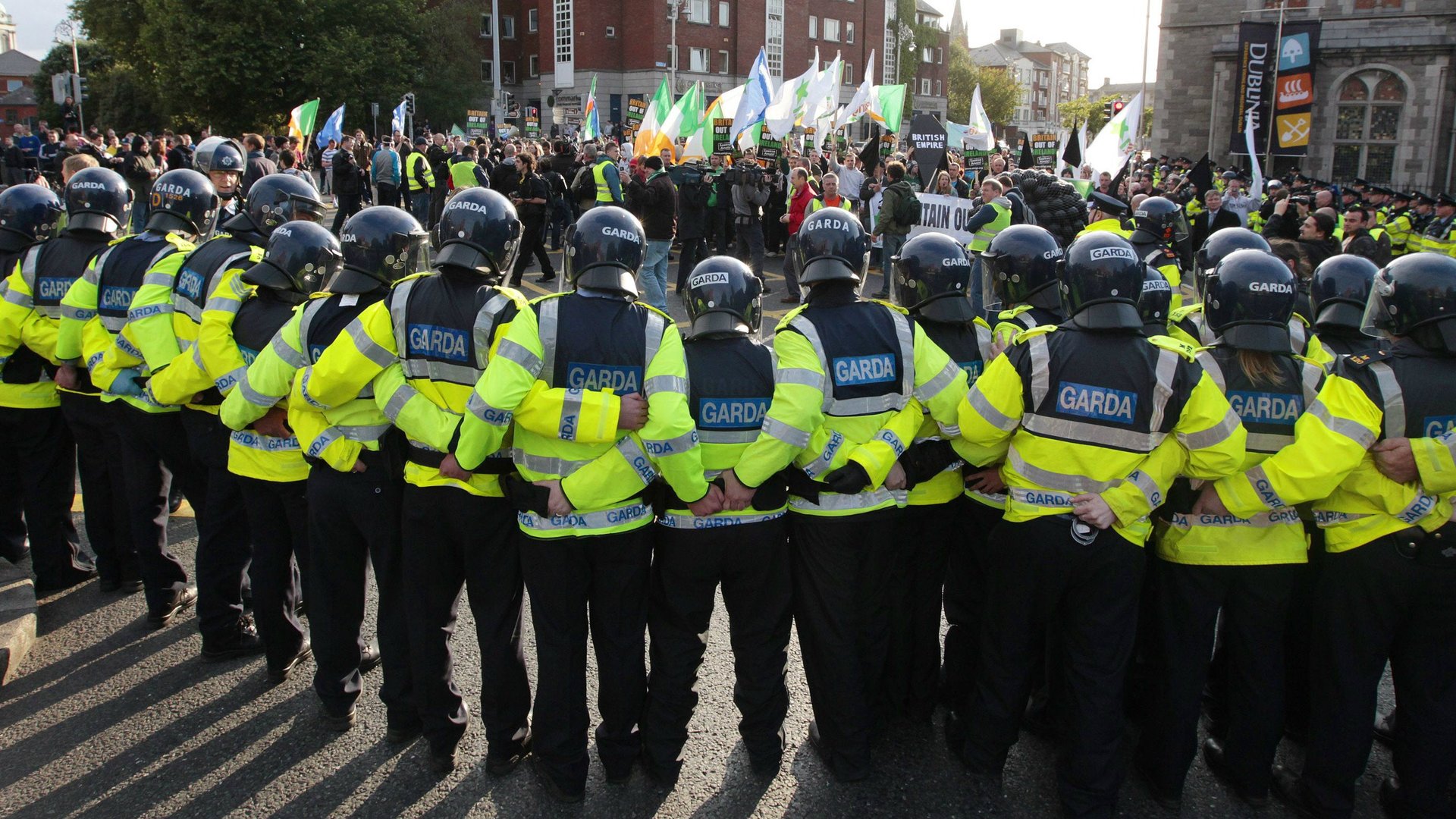How do police handle violence in countries where officers don’t carry guns?
Another week, another police shooting in the United States. So far this year, 569 people have be killed by US police, according to The Guardian’s count. Police brutality is a horrific normality and, in more ways than one, black men being shot by police has become the modern-day equivalent of lynching.


Another week, another police shooting in the United States. So far this year, 569 people have be killed by US police, according to The Guardian’s count. Police brutality is a horrific normality and, in more ways than one, black men being shot by police has become the modern-day equivalent of lynching.
But, of course, it doesn’t have to be this way. A police officer does not have to shoot to kill and, in several countries, a police officer does not even have to carry a gun. In Norway, Iceland, New Zealand, Britain, and Ireland, police officers generally do not carry firearms. In one of these countries, Iceland, it’s legal for citizens to carry guns—and there’s an estimated rate of 30 privately-owned guns per 100 people.
Richard Hill, history professor at Victoria University of Wellington in New Zealand, explains that New Zealand police were disarmed for routine work in 1886, following the principle of the British police that: “Constables are placed in authority to protect, not to oppress, the public.” For officers to carry guns would not just be unnecessary, he says, “but also antithetical to the values of civil society.”
Of course, in all but Iceland, citizens in these countries generally don’t have access to guns. This means that police are rarely taken by surprise by a firearm. There are officers trained in how to handle firearms when necessary, and can respond to reports of a citizen with a gun by sending out an armed police officer. But another key difference between the US and elsewhere is training. Paul Hirschfield, an associate professor of sociology at Rutgers University, points out that US police officers are trained for an average of just 19 weeks. Compare that to police in Norway, who have three years of training before they’re fully qualified.
“If you only have 19 weeks of training, you’re going to spend those on the most essential things. Unfortunately, in the United States, it’s about what you need to defend yourself. How you’re going to avoid getting hurt,” says Hirschfield. “If you have three years, you can also learn how to protect people, how to avoid these situations from arising in the first place. It fosters a whole different orientation and culture in law enforcement.”
Police in other countries are generally trained to de-escalate hostile situations and use minimal violence in response to a threat (as evident in the video below of British police responding to a man with a machete.)
There are examples of similar restrictions for how to respond to gun violence, says Hirschfield. So in Finland, officers have to get permission from a superior officer before shooting. In Spain, officers should fire a warning shot, then aim for non-vital body parts, before resorting to lethal shooting. “In the United States, you only shoot to kill. You only use deadly force,” he says.
It doesn’t help that the law in the United States gives fairly wide scope for police violence. Under the European Convention of Human Rights, police can only shoot if it’s “absolutely necessary” in order to achieve a legitimate law enforcement purpose. Meanwhile, in the US, police officers can shoot if there’s “reasonable” perception of a grave and imminent threat, which is a far more subjective standard.
“What defines reasonable?,” says Hirschfield. “We have a society where it’s often considered reasonable to take a black person reaching into their waistband as a threat. The whole legal framework for determining whether lethal force is legal or not is premised on a flawed assumption that officers can determine what is reasonable.”
A policy of unarmed police officers clearly has a better chance of working in countries where citizens don’t have access to guns. But what about in Iceland, where there are an estimated 90,000 guns in a population of 323,000? The country has one of the lowest global crime rates in the world and, the BBC reports, the majority of crimes that do occur don’t involve firearms.
In this non-violent country, the first police shooting that led to the death of a citizen happened in 2013. Tear gas was first used but didn’t affect the gunman and, when he opened fire on the police officers, they fired back. The incident led to national mourning, and the Iceland police department immediately apologized to the family out of respect.
As the events this week in Dallas show, being a police officer comes with great personal risk. But better training can minimize this risk, both to the police officers, and to the public.